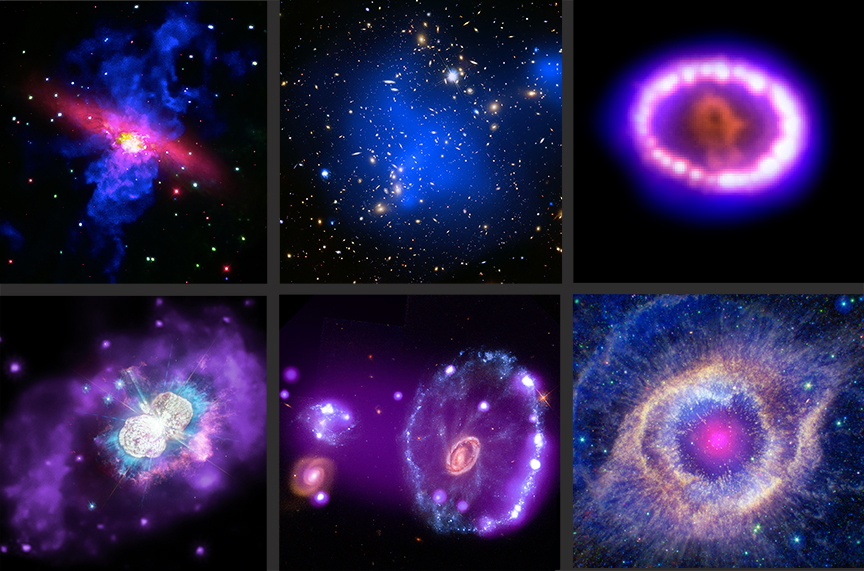If our eyes could detect light beyond just visible light, the universe might look something like on composite images we get using observations from NASA's Chandra X-Ray Observatory, Hubble Telescope and other observatories and telescopes, that pick up different parts of electromagnetic spectrum.
Such multiwavelength approach helps researchers gain a deeper understanding of how this cosmic wonders behave in depths of space.
 |
| Credits: NASA |
Top Left: M82 is a galaxy facing Earth edge-on, giving us unique look to outflow of gas driven by star formation and supernovae.
Top Center: Abell 2744 is a galaxy cluster millions of light years across.
Top Right: SN1987A is the remnant of a powerful supernova that exploded some 160,000 years ago.
Bottom Left: Eta Carinae is a binary star system still waiting to go supernova.
Bottom Center: The Cartwell Galaxy was created after one galaxy punched trough another in a powerful collision.
Bottom Right: Helix Nebula is a planetary nebula, providing us a glimpse at what our Sun might look like in 5 billion years, after it expels its outer layers and become a white dwarf.
0 Comments